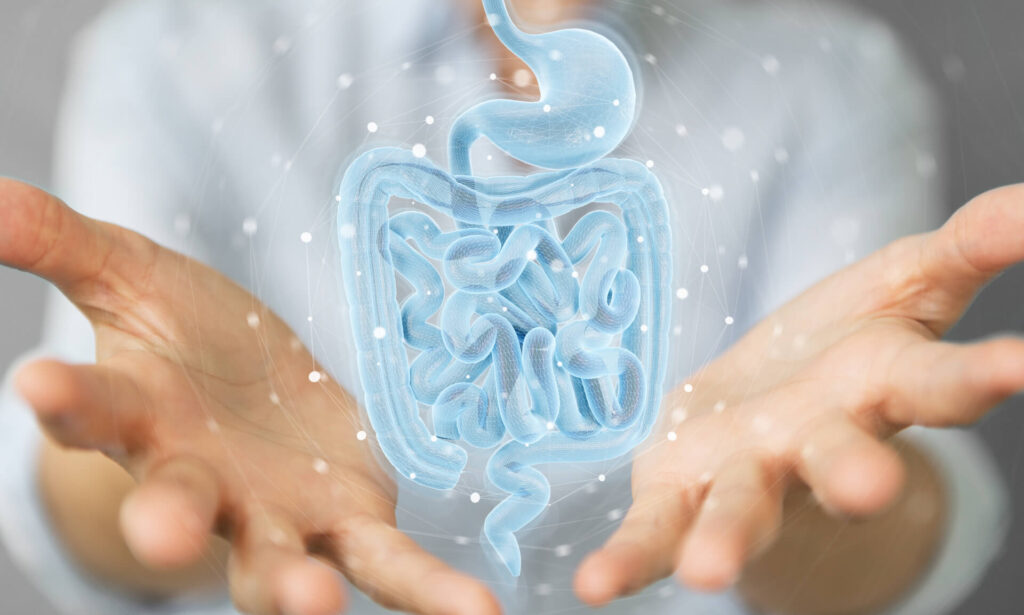
Why Motion is Lotion
Yes, yes, we all know that exercise is good for us, but why? Exercise is essential for cartilage health! What is cartilage and why do you
Your lens is your perception. It is your worldview, your mindset, through which you view yourself and the world around you.
Home » Guiding Principles » Your Lens
One of the biggest obstacles to leading your best life is the lens through which you perceive yourself and the outside world.
Who are you?
If you view the world and yourself primarily from a mental perspective, you will likely pause before answering this question. You draw your energy and focus to your brain.
You begin to think.
Your brain creates a stream of images, memories, and concepts of yourself, both good and bad. It matches them to a word from your native language that best describes these concepts of self, and you say, “I am a woman/man black, first nations, doctor, mother, refugee, christian.”
But why did your brain come up with these specific definitions of who you are, and why did it not choose from the multitude of other words you could have or, in hindsight, would have wanted to use to describe yourself? Would the words you used to describe yourself be different if you asked this question a few years ago or five years later?
The most surprising neuroscience breakthrough is that our brains are neuroplastic. They are not hardwired from birth to provide an accurate reflection of self and the outside world. Instead, they form neural networks based on what we are doing, thinking and taking in from the outside world. They reflect our reality, not “the” reality! Change what we think about, change what we expose our brains to through our senses and within weeks, we can form new neural networks that change our perception of self and the outside world.
Who are you?
This time, bring your awareness towards the centre of your chest, the area of your 4th chakra and your heart. Take a deep breath.
Relax, what do you feel?
When you bring your energy and awareness to your heart, you don’t think. You feel!
In Chinese medicine, your Shen, your spirit, resides in your heart. In yoga, your heart is the location of the 4th chakra and serves as your center of love for oneself and others, compassion, empathy and forgiveness. When we feel love, we feel it in our hearts. When we send love electronically, we send a heart emoji. When we lose love, we are heartbroken. So painful can be this loss that studies have now shown that you can die from “a broken heart.”
Within the right upper chamber of your heart, in the sinoatrial node, your heart creates an electrical impulse that causes your heart muscles to contract. This electrically induced contraction is your heartbeat, and it is the strongest electromagnetic field in your body’s biofield. Measured using an electrocardiogram (ECG), this field is about 60 times greater in amplitude than the brain waves recorded in an electroencephalogram (EEG). The magnetic component of the heart’s field is even stronger, around 5000 times stronger than that produced by the brain, and tissues do not impede it. You can measure it several feet away from the body with a Superconducting Quantum Interference Device (SQUID)-based magnetometers.
Your heart not only changes its rhythm based on what you feel it can synchronize with other heartbeats around you. Your brain changes its neural networks with what you think, and your heart changes its rhythm with what you feel. They both change in reaction to your external environment.
The potential of how far our heart’s electromagnetic energy field can reach continues to be studied as technology plays catch-up.
Put your health first. Subscribe to my newsletter for the latest news and information to guide you in your healthy journey.
An excellent predictor of our health is the beat-to-beat variability in our pulse. Known as heart rate variability (HRV), this beat-to-beat variability is strongly influenced by our emotions and by our general sense of wellbeing. When we feel love, feel empathy, meditate, practice breathing techniques or connect with the sense of the divine, our HRV increases, a good thing. When we are stressed, fearful, angry or inflamed, our HRV decreases. Those more interoceptive (can better answer how they feel) have a higher HRV.
So substantial is heart variability as a predictor of health that apple watches now measure it.
Our heart is not only affected by our inward emotional state, it is affected and can synchronize with those around us and their emotional state. In other words, emotions are not just intrapersonal interior states but interpersonal, shared experiences.
If you install two pendulum clocks on your wall, they will eventually synchronize and start swinging through the seconds in perfect unison.
Interpersonal synchronization also known as coherence, the terms used to discuss the synchronization between people, can be measured using HRV, skin conductance and functional near-infrared spectroscopy (fNIRS)-based hyperscanning. In a study on speed dating, overt behaviour, such as smiling, laughter or eye gaze, or mimicry of these signals, did not predict attraction, but rather it was the synchrony of heart rate and skin conductance.
Couples synchronize their heart rate just sitting together, even more so in intimate moments and with an empathic touch. Even groups intently listening to a story synchronize their heart rate.
Your brain changes its neural networks with what you think, and your heart changes its rhythm with what you feel. They both change in reaction to your external environment.
Let’s try this one more time.
Who are you?
This time bring your awareness to your belly, your gut, the seat of your 3rd chakra, your body’s energy powerhouse and home to your microbiome.
Your Microbiome is the community of bacteria, viruses, fungi, and other organisms found throughout the body, especially in your gut.
These organisms are not just hanging out nibbling on some fibre we ate. Nope, these bacteria interact with and influence our immune system, our cellular metabolism, and our nervous system. They even alter our mood and behaviour.
Studies show that many of our body’s immune function has been outsourced to these bacteria. They are also involved in producing serotonin, the neurotransmitter involved in depression. Over 80% of our serotonin comes from our gut, not our brains. This adds a whole new meaning to having a “gut” feeling.
So vast is our microbiome that we have more microbial DNA than human DNA. If DNA is destiny, as some purport, we have to ask, are we an individual human entity or an ecosystem and who is in charge here?
Various placebo-controlled clinical trials have shown that supplementing one’s diet with different strains of bacteria can significantly change one’s mood, stress level, memory and ability to perform tasks. Change your internal or external environment, and you change yourself.
Are we an individual with defined boundaries separated by everything around us? Are we Energy, a vibration harmonizing and synchronizing with other fields around us? Are we a vast ecosystem intimately connected to the natural world around us? Are we amazing, or are we pathetic? Is the world around us beautiful or fearful and cruel?
It all depends on the lens you wear, a lens created by your environment. If you view the world from a mental perspective and your neuroplastic brain constantly sees images of anger, rape and war, then you will view the world as evil and fearful. If you continuously dwell on negative images and concepts of self, your neuroplastic brain will strengthen those “I am bad” neural networks, and you will “see” yourself as negative.
Your thoughts have created a mental lens of self as unfavourable.
If you feel the world more from an emotional/spiritual perspective and your heart has felt great grief and loss, and you are surrounded by people who are angry and self-centred, then you will feel the world as angry, and you will feel a dreadful sense of despondence.
We all have choices. Due to poverty, social isolation, war, and lack of control, some of us have fewer choices, and our options are less palatable than someone more fortunate. We must never forget this. We all have choices.
True health comes from an understanding that the way we see life is not a reflection of “the” reality but “our” reality. It reflects the lens we wear, which our environment has created—created by our internal and external environment. Change our internal environment by the thoughts we dwell on, by the emotions we dwell on. Change our external environment by what we expose our brain to through our senses, by what we expose our heart to, by what food we expose our microbiome to, and we will change our perspective. Our lens, our view, is not fixed.
Knowing it is a lens we wear, that our thoughts and feelings are not based on some absolute truth, then we can decrease the impact these negative representations have on us. We can begin to objectively look at our environment and change it. Change our physical, mental and emotional/spiritual environment to reach our full potential.
So here you are, it’s midday Friday. You are somewhere along your life journey. You have your Compass pointing to your physical, mental, and spiritual health, and you have read the instructions and understand how to change your lens. You started your day with a morning exercise routine and a healthy breakfast suited to your microbiome, and you have successfully not dwelled on that awful comment from your workmate. Instead, you refocused your thoughts and feelings on what a great job you are doing when you get a text from a friend, ” TGIF, tequila shots at Steamworks?” What do you do?
You want to let health be your guide, and you know tequila shots are not best for your physical health, but you sure feel you could do with a bit of a blowout. How do you choose? How do you know which is the healthy choice?
That’s when you pull out your final navigational tool, your Scale, and you find your balance.

Yes, yes, we all know that exercise is good for us, but why? Exercise is essential for cartilage health! What is cartilage and why do you

We, humans, live in a symbiotic relationship with thousands of bacteria, archaea, fungi, viruses, and protozoa that together make up our microbiome. The exact makeup

How to Boost Nitric Oxide Levels Naturally Did you know that nitric oxide (NO) is one of the most important anti-aging molecules in our body?